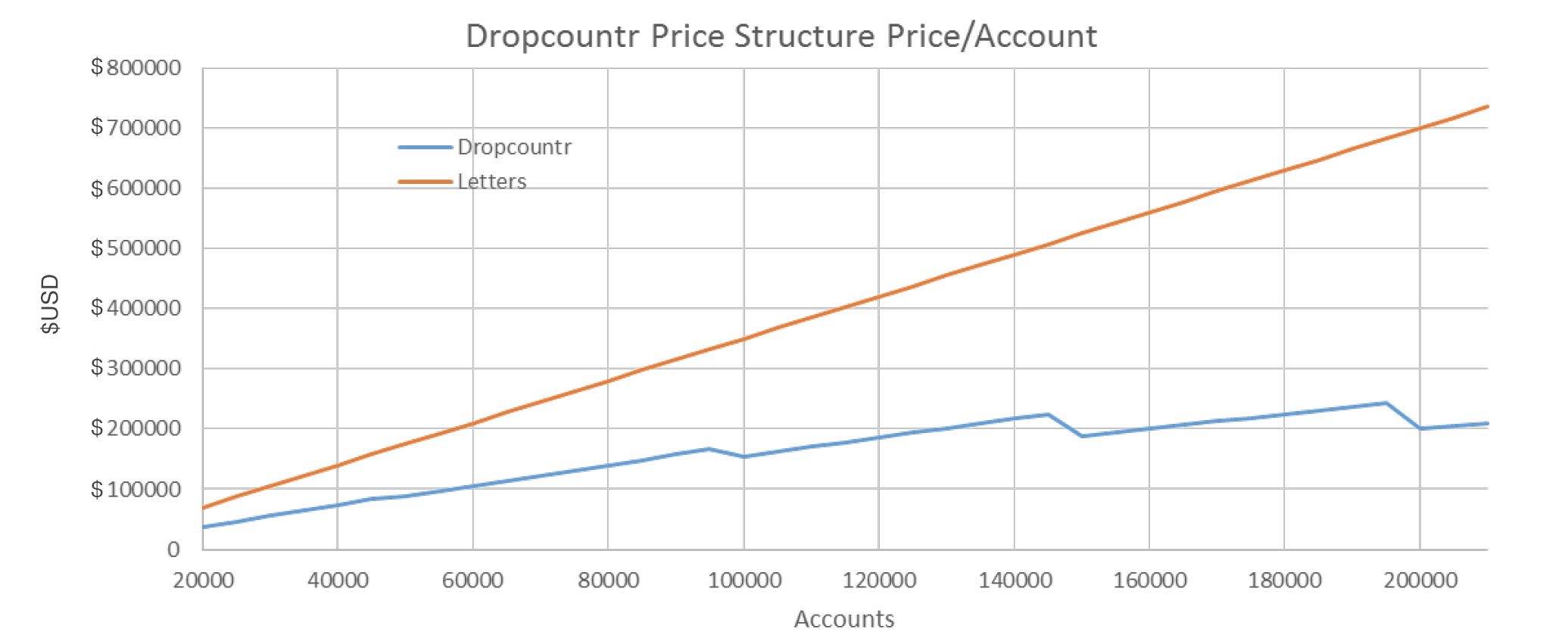Leaks happen. Water utility staff know this best. An unexpected, possibly expensive and definitely time-consuming incident that takes time, money and resources. Technologies such as AMI are helping utilities and customers avoid long term damaging costs.
Similarly, regulatory changes happen. Water quality issues happen. Media firestorms happen. Water utility staff also know this best. They have to spend unbudgeted time, money and mental resources communicating with ratepayers, their elected officials, regulatory organizations and the media to address unforeseen events. In fact, Water Resources Research found that the more a utility communicates with its ratepayers, the more the ratepayers agree with political leaders and professional water managers. This finding was corroborated by last year’s J.D. Power Water Utility Satisfaction Survey and should probably be noted by utilities considering usage restrictions or rate increases.
Denver Water recently presented a 5-year perspective on their experience evolving ratepayer engagement programs at the AWWA Sustainable Water Management Conference. Their goal was to measure the conservation cost-effectiveness ($/ac-ft) of and customer response to different communication strategies. Denver Water’s experience, and condensed presentation below, can help inform your decisions regarding digital communication. The presentation can be found at the end of this post.
Rewind it five years: 2013
In 2013 Denver Water’s conservation team began a monthly targeted paper letter campaign to 4,000 customers that used more than 25 gallons per square outdoor foot in 2012. Recipients were given an efficiency target (12 GPSF for pervious area) in the context of their usage. Some lessons were learned, largely around tone and content:
- Customers were confused about usage reports based on previous year
- Wording was harsh (25 opted out)
- Average savings was 2.8% compared to control group
- Cost / ac-ft: $396
- Ac-ft Saved: 51
Efficiency Letters: 2014-2016
The following year Denver Water expanded the scope of their targeted paper messaging campaigns to 13,000 customers and started to include social norming features. These reports lasted two years and were based on layouts seen on energy bills and included more generalized language around efficiency recommendations and a “customers like you” graph that grouped customers based on their indoor usage and outdoor characteristics. Key lessons from these campaigns included:
- Cost / ac-ft $824
- Ac-ft saved: 69
- Fewer customer calls compared to the initial outreach in 2013 (softening the language worked)
- Customer survey of inefficient users:
– Willing to reduce water
– They want more information than what the bill provides
In 2016 Denver Water increased the number of Efficiency Letter recipients to 20,000 and realized 112 ac-ft savings at $793/ac-ft.
It’s a mobile-first world: 2017
In 2017 Denver Water explored other channels for engaging customers and piloted a Dropcountr customer portal with the aforementioned 20,000 Efficiency Letter recipients. This “opt-in” digital approach provided Denver Water customers with all the features from earlier reports and more. It also provided the utility with advanced usage analytics and customer-supplied information such as household occupancy, types of appliances, presence of a pool or a lawn etc. The information gathered can be shared with other departments within the utility such as systems or demand planning, providing value beyond the initial conservation program.

Easily scalable
One of Denver Water’s key insights was that supporting 2,000 accounts with Dropcountr’s technology is just as easy as supporting 200,000 accounts. While the cost of paper outreach increases with every unit shipped, software platforms like Dropcountr can cost-efficiently and consistently support all customers at a fraction of the price.
More effective
Paper reports were effective in supporting Denver Water’s conservation programs but their impact is short-lived – water awareness lasts only from opening the envelope to recycling the paper report. Digital portals offer customers a round-the-clock relevancy – usage data, messages, price tiers and even rebates that can be updated on a moments notice without the cost or time-delay of paper reports.
This, coupled with the likelihood that customers are more likely to engage with their phones than with paper mail, led to a more effective (ac-ft conserved) and cost-efficient ($/ac-ft) campaign. In the end, 152 ac-ft were saved at a $450/ac-ft price point – well below the savings realized in the paper report trials.
Adoption signals
The Dropcountr customer portal, HOME, was initially offered to 10,721 of the 20,000 aforementioned Denver Water Customers. Several email campaigns were sent to these customers explaining the program and encouraging registration (opt-in approach). Within four weeks 19% of those recipients had registered for HOME; by fifteen weeks 29% registered. This level of rapid adoption was a clear signal that customers desired and expected this channel of utility engagement – a promising alternative to expensive traditional (paper) channels.
Perspective helps
Five years of messaging trials gave Denver Water good perspective on what works, the associated costs and customer participation. Denver Water conducted a detailed review of several engagement options and concluded that the utility needs a digital customer relations platform that offers an online portal / app like Dropcountr that communicates efficient use. And it makes sense – digital communication is effective because it is:
- cost-effective
- immediate
- trackable
- easily adaptable to customer feedback
- highly-scalable
- preferred by the customer
- provides analytical feedback
Digital engagement and customer portals should be an option on the table if you’re looking to build goodwill with ratepayers ahead of these uncomfortable conversations or simply looking for a more cost-efficient means of communication.
Denver Water’s Presentation (wait a moment for the deck to load)
[pdf-embedder url=”https://www.dropcountr.com/wp-content/uploads/2018/05/30025943_040218150503_TUE08-01KrcmarikPresentation.pdf”]

One Response
Comments are closed.